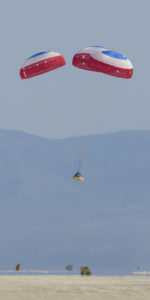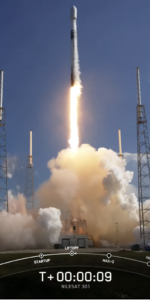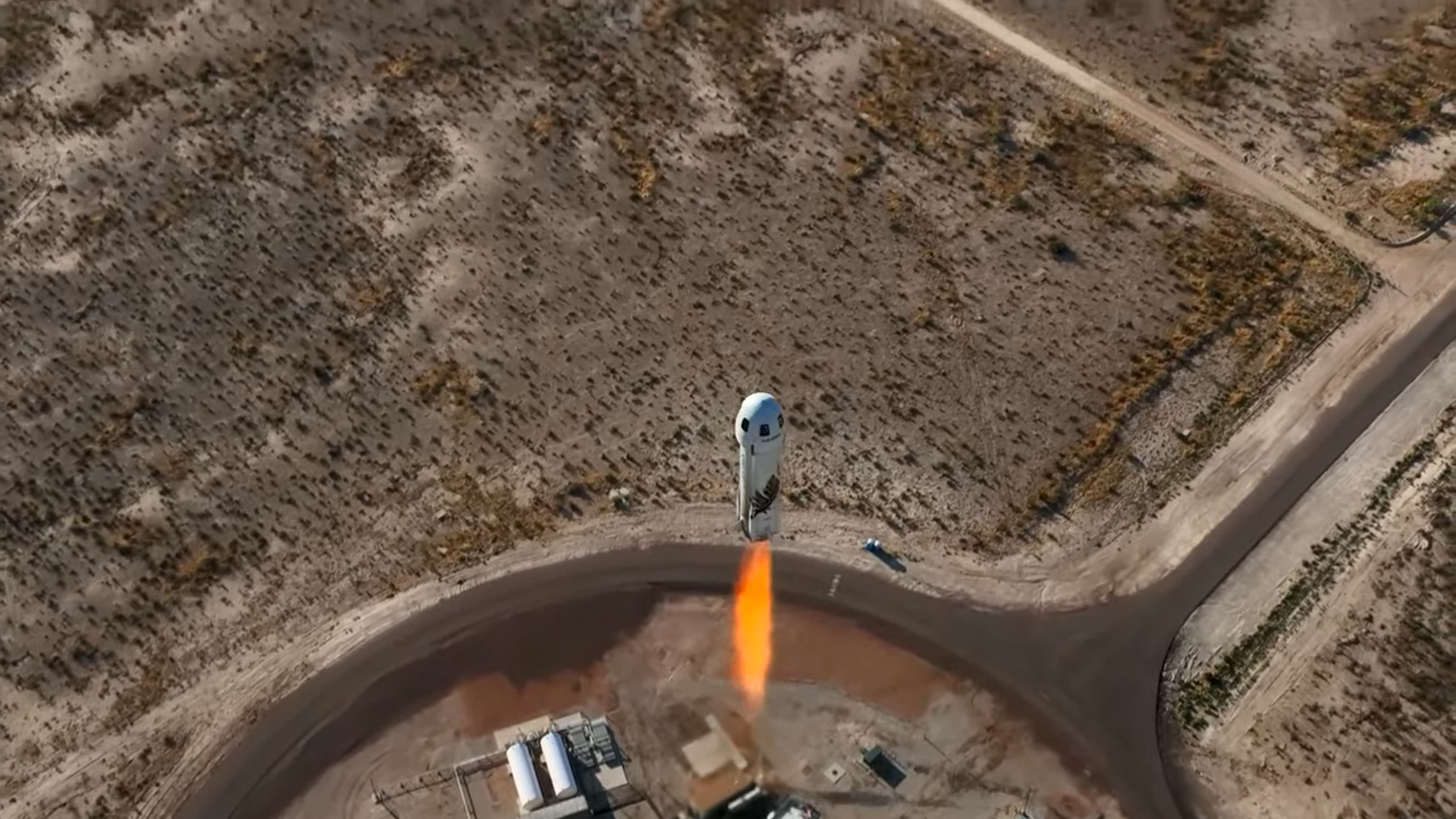
Following a two-week delay due to an issue related to backup systems aboard the NS4 New Shepard booster, Blue Origin successfully launched six humans through the 62-mile-high (100-kilometer) “Kármán Line” early Saturday, 4 June. Aboard NS-21 was repeat flyer Evan Dick, an engineer and investor who previously rode NS-19 last December, joined by electrical engineer and former NASA test lead Katya Echazarreta, business jet pilot and Action Aviation chairman Hamish Harding, civil production engineer Victor Correa Hespanha, adventurer, real estate investor and Dream Variation Ventures co-founder Jaison Robinson and explorer and former U.S. Navy officer Victor Vescovo, who is co-founder of the private equity firm Insight Equity. Today’s flight brings to 25 the total number of humans Blue has launched to the edge of space in under a year.
The crew for NS-21, who wryly dubbed themselves “Natural Selection”, was announced last month. And in keeping with the multitude of “firsts” achieved on four previous New Shepard flights—the first siblings to fly together, the first father-and-son duo to fly together and the youngest and oldest humans ever to enter space—Saturday’s mission included a couple of its own.
Echazarreta became the first Mexican-born woman and the youngest U.S. woman, aged just 26, to enter space, whilst Hespanha became Brazil’s second spacefarer after his fellow countryman Marcos Pontes voyaged to the International Space Station (ISS) way back in March 2006. And having flown NS-19 less than six months ago, Dick becomes the first person to fly two New Shepard suborbital flights above the Kármán Line.
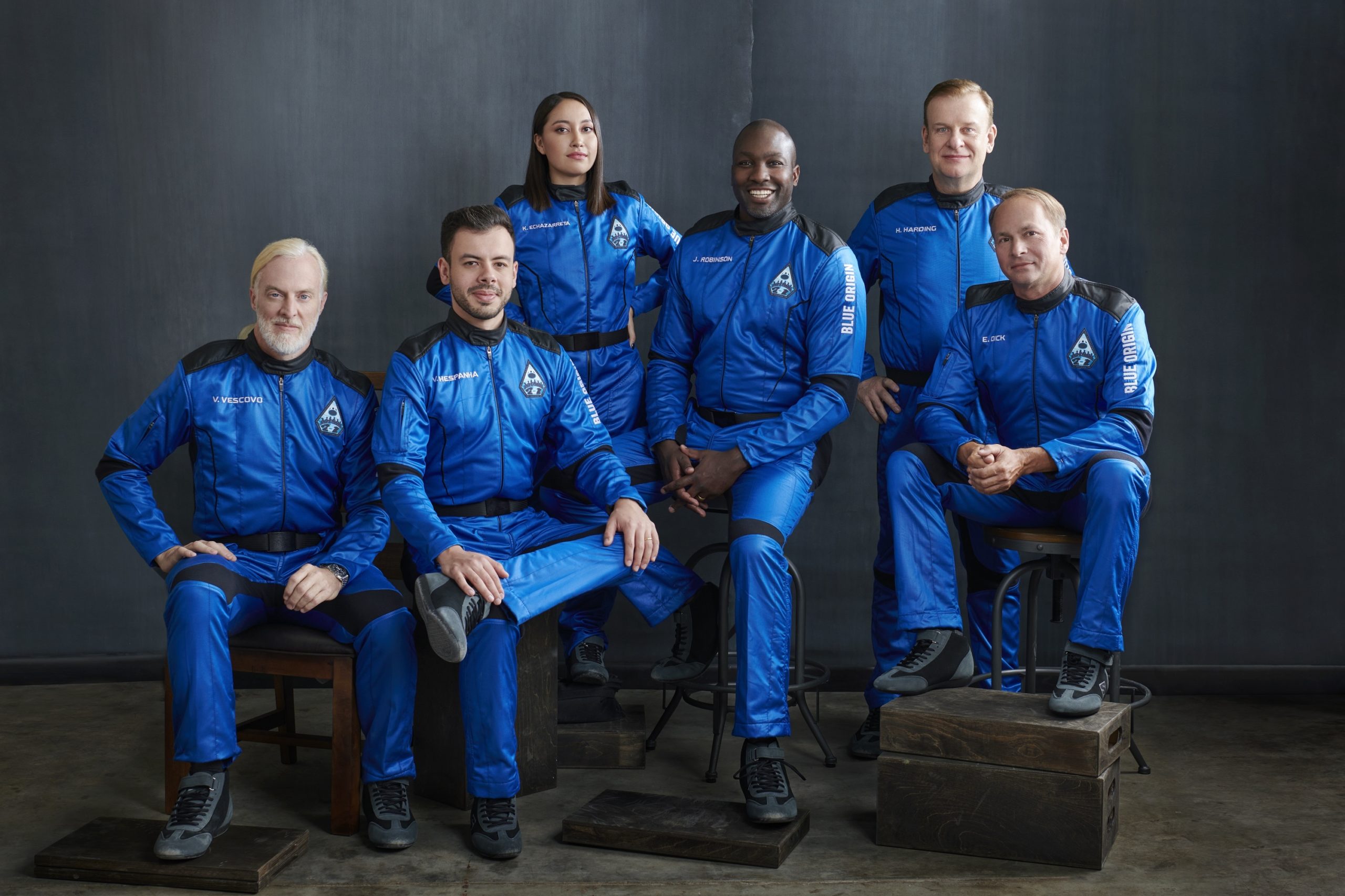
The crew’s official patch highlights a raft of accomplishments. An arrow symbolizes Blue’s astronaut pin in honor of Dick, whilst a lightning bolt represents Echazarreta’s passion for electricity.
“I could not have asked for a more perfect patch,” Echazarreta excitedly tweeted. “The lightning bolt? Amazing!”
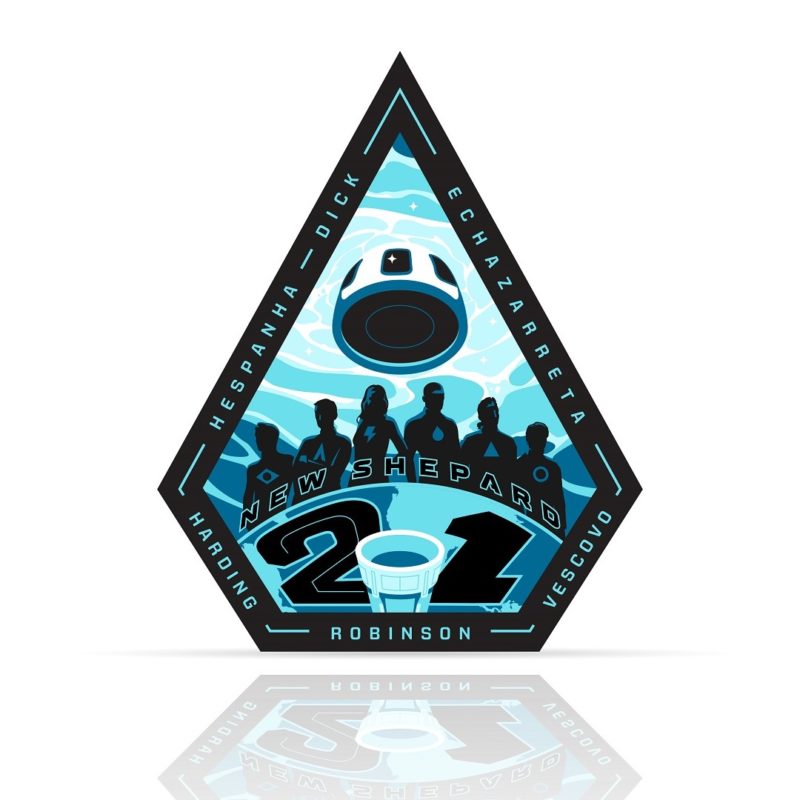
Elsewhere on the patch, a circle pays homage to Harding’s July 2019 world-speed record-breaking global circumnavigation flight, a diamond recognizes Brazil’s national flag for Hespanha, whilst Robinson’s love of diving, water polo and climbing the world’s tallest waterfall is reflected by a water droplet. Lastly, Vescovo’s symbol is a triangle, representing his feat of summiting the seven highest mountains on the seven “traditional” continents of North and South America, Asia, Africa, Europe, Australia and Antarctica.
Vescovo also became the first person to visit the deepest point of the world’s five oceans: the Atlantic’s Puerto Rico Trench, the Pacific’s Challenger Deep, the Arctic’s Molloy Deep, Antarctica’s South Sandwich Trench and the Java Trench in the Indian Ocean.
Nor was NS-21 the first joint endeavor for at least two of its crew. In March of last year, Vescovo and Harding dove the Challenger Deep—the deepest point of any of Earth’s oceans, within the Mariana Trench, off Micronesia—in a two-person submersible.
Tweeting after that descent, Harding was evidently keen for another adventure. “Absolutely can’t wait for our next mission/journey/adventure,” he tweeted last August, little realizing, perhaps, that his next voyage with Vescovo would be to the edge of space.
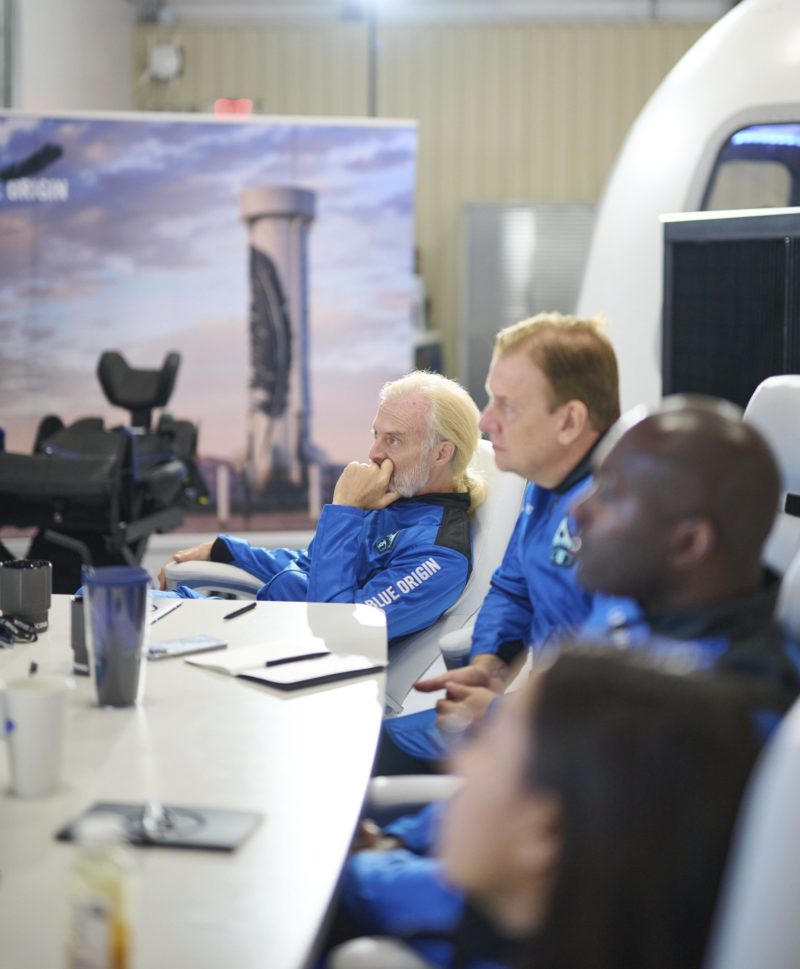
Launch of NS-21 was originally targeted for the morning of 20 May, from desolate Launch Site One in the West Texas desert. However, just two days prior to launch, Blue revealed an issue with the NS4 booster during final checkout. “We observed one of New Shepard’s backup systems was not meeting our expectations for performance,” it noted. “In an abundance of caution, we will be delaying the NS-21 launch.”
“Safety first,” tweeted Echazarreta, after the announcement of the delay. “Grateful for the Blue Origin team and their willingness to put us first. Can’t wait for the launch.” Added Vescovo: “It’s much better to resolve an issue on the ground—no matter how small—than in the air. Safety always and forever is the #1 requirement.”
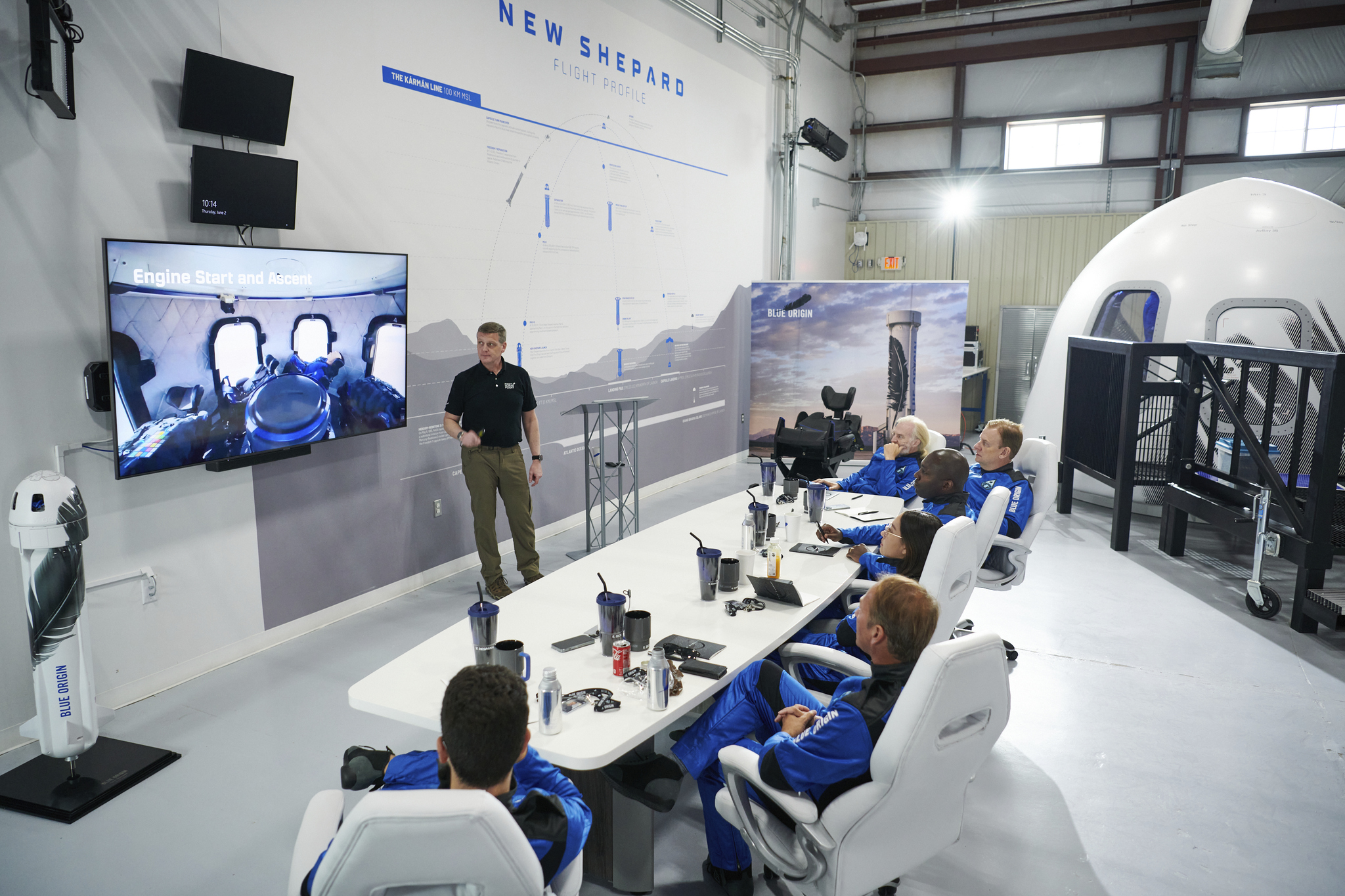
And for a man attuned to exploration, Vescovo took the delay in his stride and relaxed…by partaking in a spot of light-hearted exploration. “When your rocket launch is delayed, try another adventure,” he tweeted. “Two of my fellow astronauts and I went over and hiked up the highest mountain in Texas.” That mountain, Guadalupe Peak, sits 90 miles (140 kilometers) east of El Paso and rises to an elevation of some 8,751 feet (2,667 meters).
At length, on Tuesday, Blue announced a revised T-0 for the NS-21 launch” at 8 a.m. CDT Saturday. The excitement in Blue’s Astronaut Village in the West Texas desert was palpable. “You just have to be patient sometimes,” tweeted Vescovo. “After all, it is rocket science!”
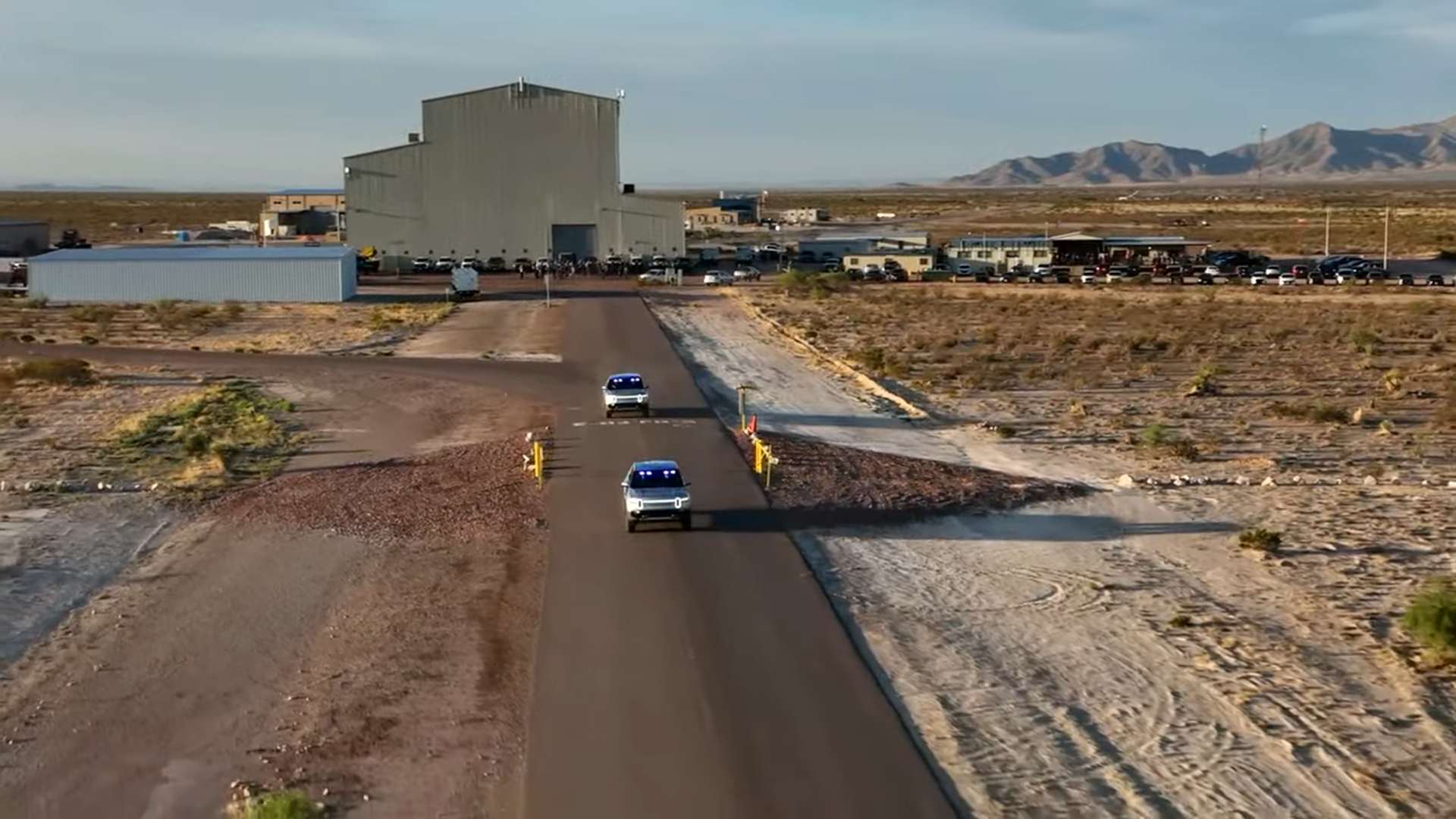
And Harding, whose July 2019 circumnavigation of the globe was done in the company of former U.S. astronaut Terry Virts, proved decidedly more businesslike. “Off to space on Saturday, 4 June,” he nonchalantly tweeted, as if about to take his two Golden Retrievers for a walk, “on the Blue Origin’s rocket.”
That rocket, of course, was NS4—a fourth-generation iteration of New Shepard—which today made its seventh flight, having first launched back in January 2021. On its maiden voyage, it trialed speakers, microphones, a crew alert system and push-to-talk buttons, as well as cushioned wall-linings and sound-suppression gear.
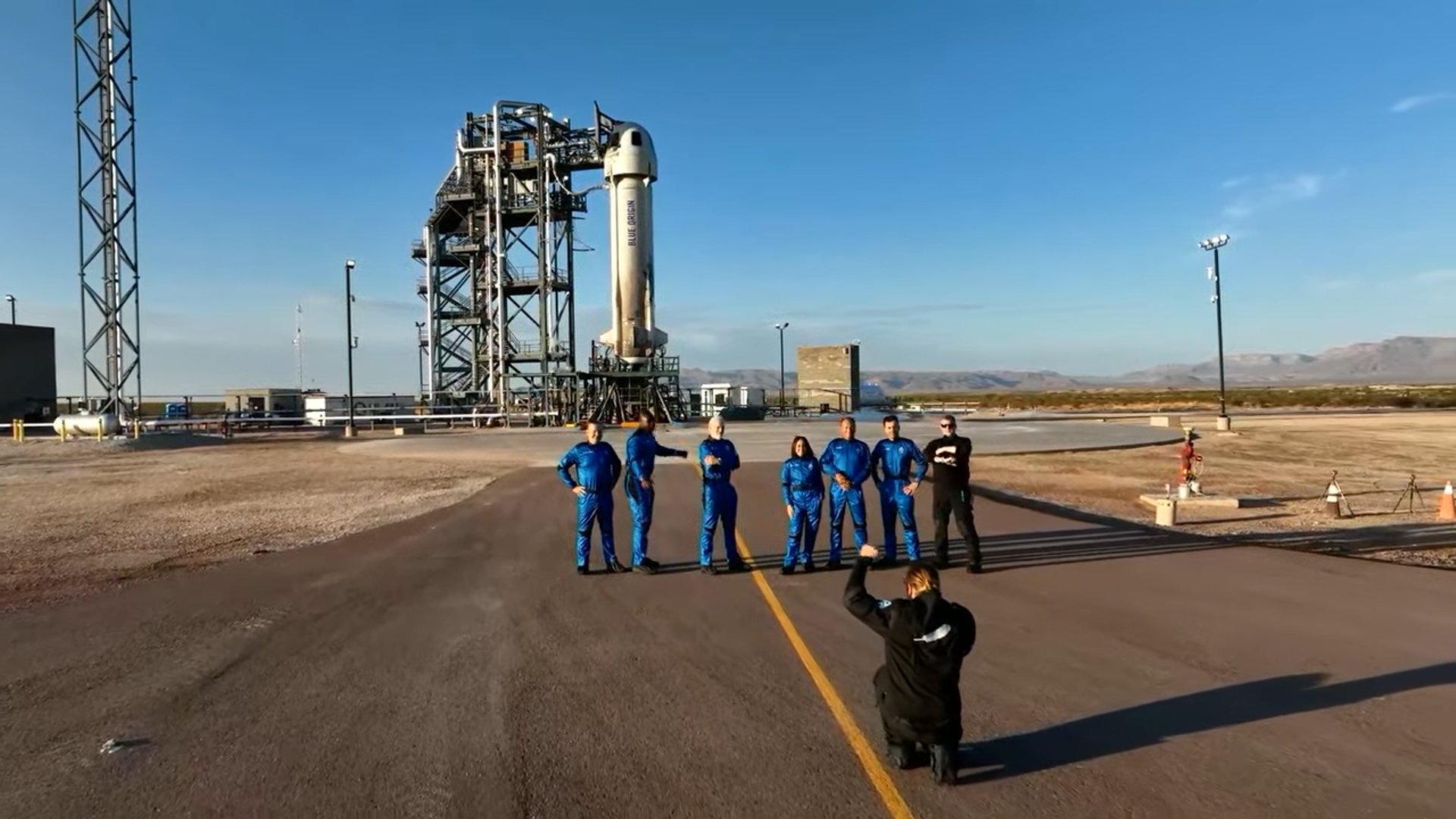
A second flight in April 2021 saw the rehearsal of pre-launch crew ingress and post-landing crew egress procedures. That success cleared the way for five human flights to the edge of space last July, October and December and more recently in March 2022 and this morning.
Dick, Harding, Echazarreta, Hespanha, Robinson and Vescovo completed their training in Blue’s Astronaut Village on Friday. And about 7.5 hours prior to Saturday’s liftoff, the 59-foot-tall (18-meter) NS4 stack was transported two miles (3.2 kilometers) from its assembly facility, nicknamed “The Barn”, out to Launch Site One.

The process of loading liquid oxygen and hydrogen propellants got underway at T-3 hours. And at T-45 minutes, Dick, Hespanha, Harding, Vescovo, Echazarreta and Robinson boarded Blue’s Rivian trucks for the trip to the pad.
Clad in their bright blue suits, they ascended four flights of stairs to the top of the gantry. There, the Tower Operations Team assisted them into their couches aboard the Crew Capsule.
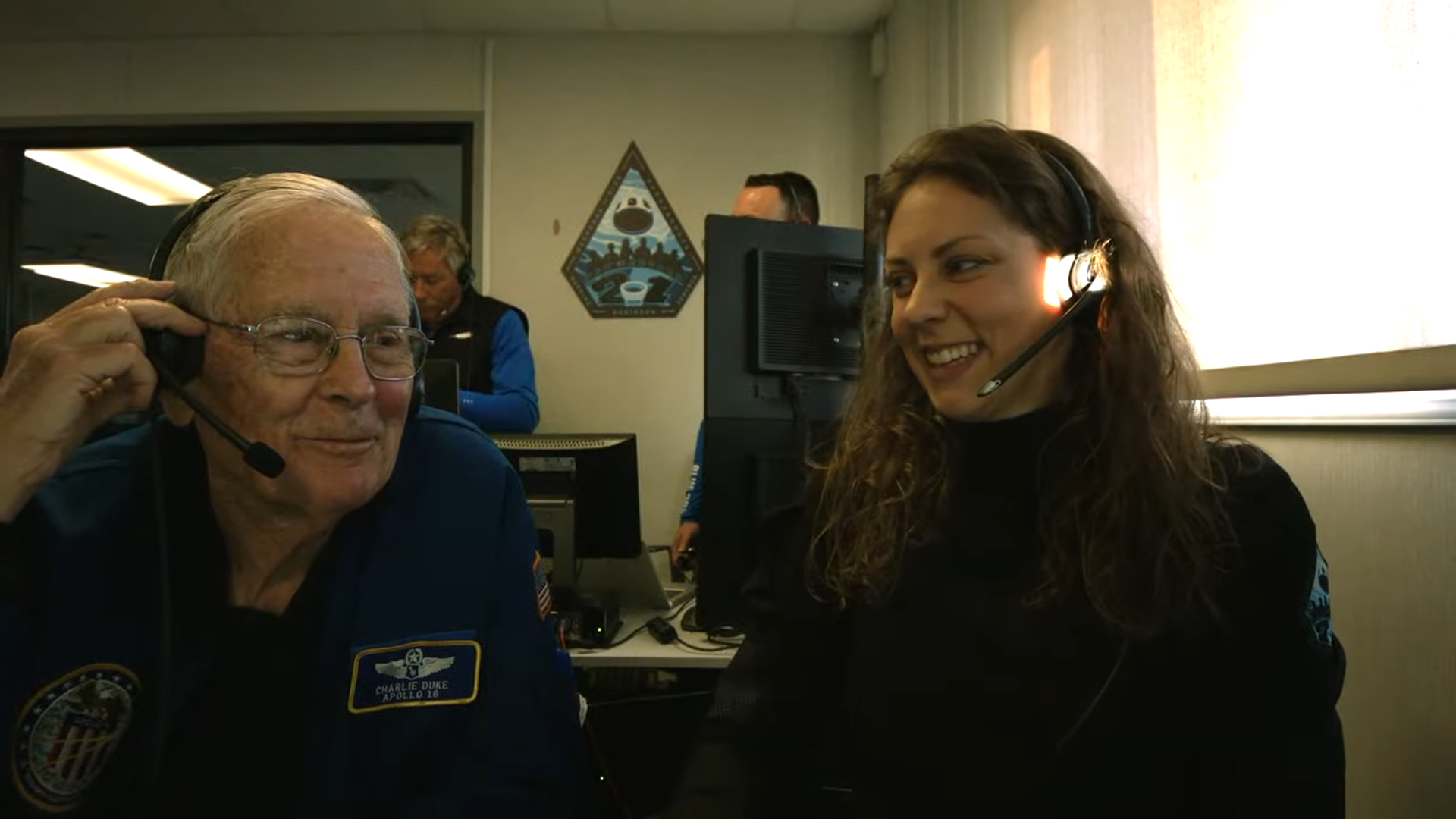
As the final minutes of the countdown ticked away, heading for a slightly delayed 8:22 a.m. CDT launch, the NS-21 crew received bon voyage remarks from members of March’s NS-20 crew and from NASA astronaut Charlie Duke, who served as Lunar Module Pilot (LMP) on Apollo 16 in April 1972.
Five decades ago, Duke became the tenth human to leave his bootprints on the surface of the Moon. He is one of only four Moonwalkers still with us.
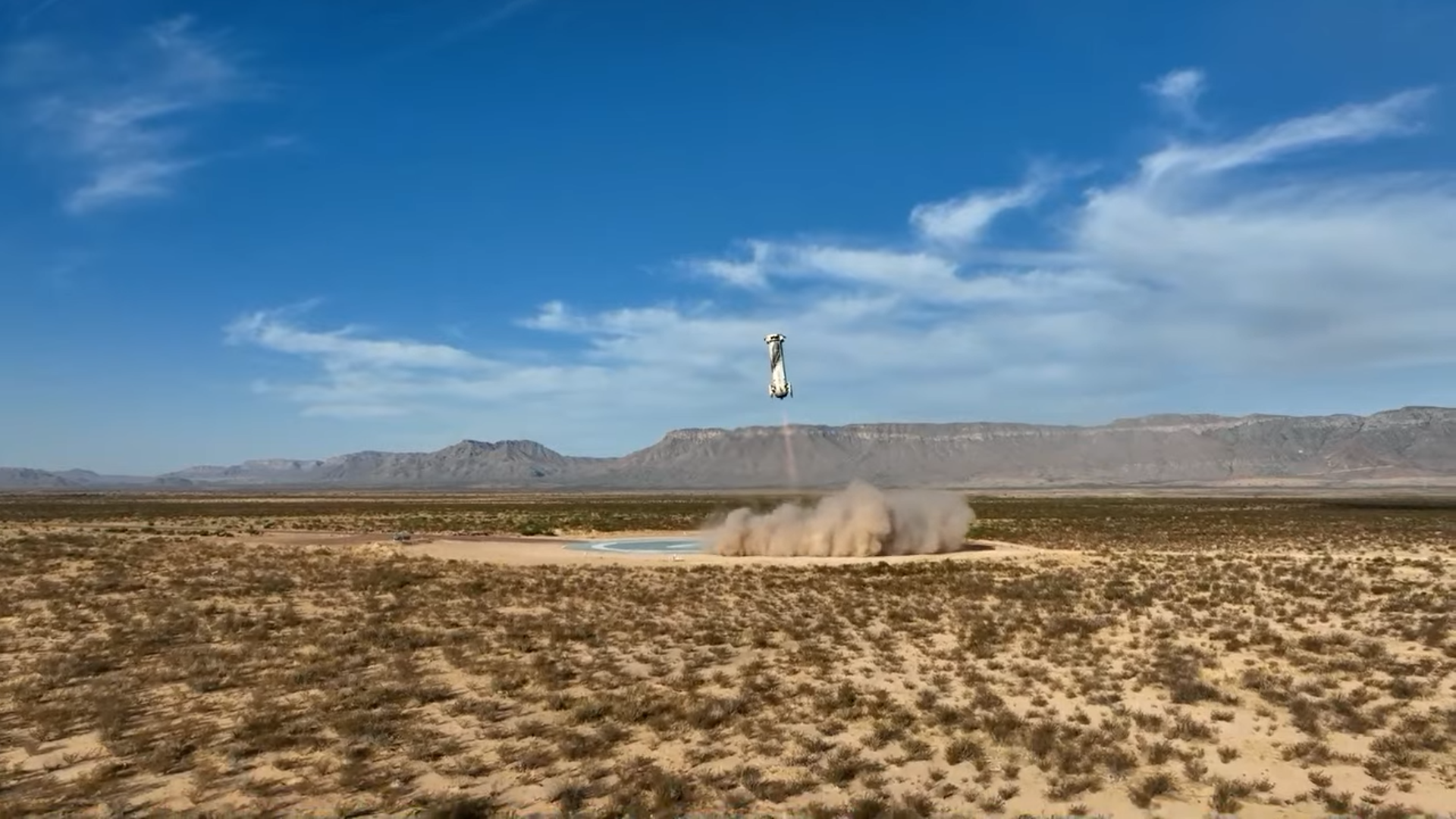
Clocks were held for a couple of additional minutes at T-10 minutes, to ensure that all systems were fully aligned ahead of the final “Go/No-Go” poll. The countdown resumed counting at 8:15 a.m. CDT, before a second brief hold at T-3 minutes and 30 seconds.
The gantry retracted away from the vehicle at T-2 minutes and a surprisingly quiet countdown was suddenly broken by the transition to Internal Guidance at T-16 seconds and the call to “Command Engine Start” at T-4 seconds. With a thrust of 110,000 pounds (50,000 kilograms), New Shepard’s powerful BE-3 engine roared to life and the booster commenced a fast climb away from the West Texas desert at 8:25:02 a.m. CDT.
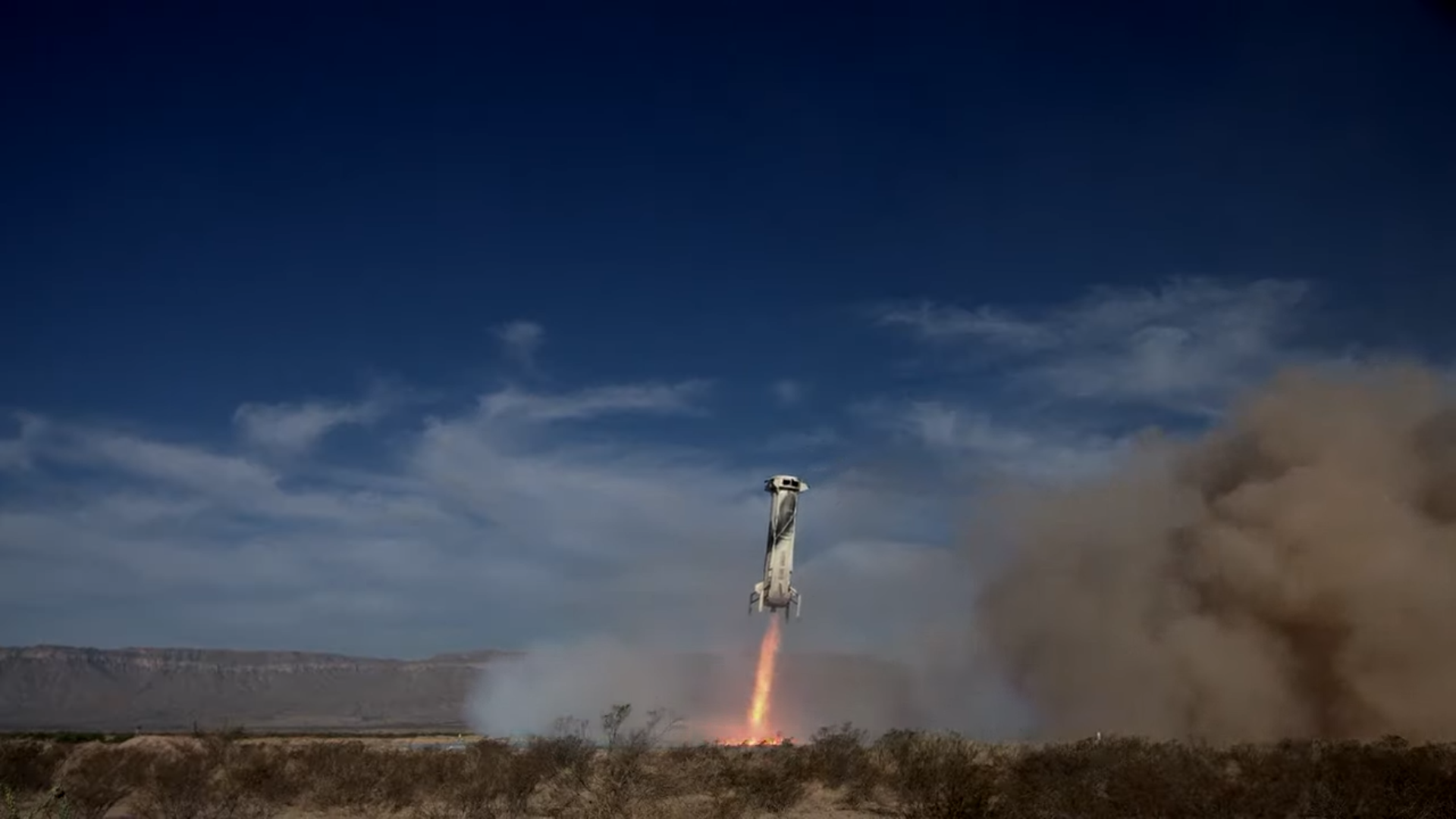
New Shepard passed “Max Q”, the phase of maximum aerodynamic turbulence on its structural airframe, about 50 seconds later and the BE-3 shut down at two minutes and 20 seconds, by which time the stack had reached an altitude of just over 200,000 feet, equivalent to more than 37 miles or 60 kilometers.
Shortly afterwards, NS4 and the Crew Capsule parted company and the booster began its descent back to Earth, announcing its arrival with a trademark sonic boom, then touching down smoothly on its landing pad at seven minutes and 25 seconds.
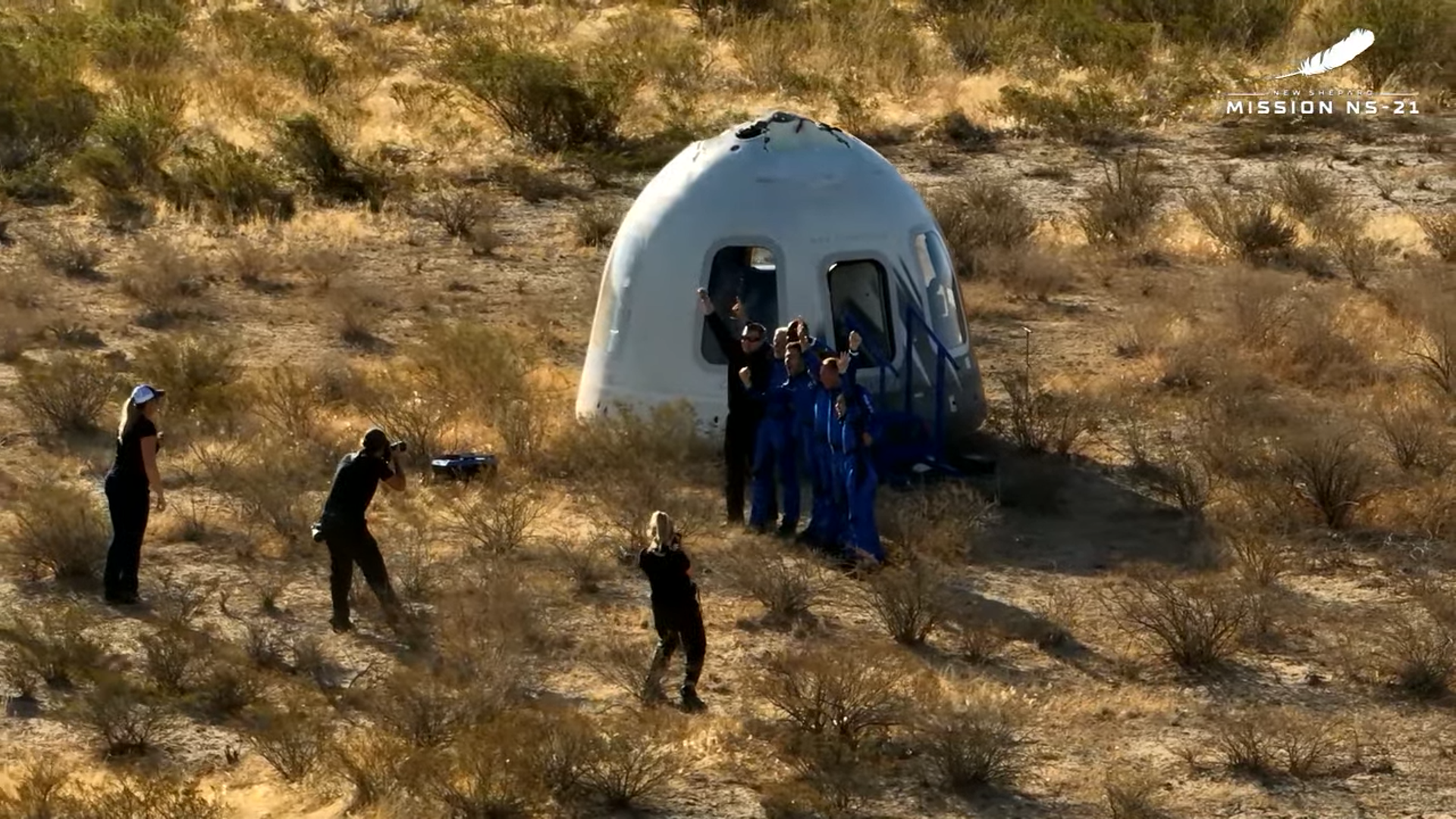
Meanwhile, the Crew Capsule continued to coast upwards to an apogee of 347,538 feet (equivalent to 65.82 miles or 105.93 kilometers). Dick, Hespanha, Harding, Vescovo, Echazarreta and Robinson logged three to four minutes of weightlessness before heading back home.
Descending beneath three beautiful red-and-blue parachutes, the Crew Capsule touched down at 8:35:07 a.m. CDT at T+10 minutes and 5 seconds. Peak ascent velocity was 2,240 miles per hour (3,604 kilometers per hour).




